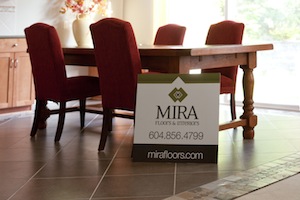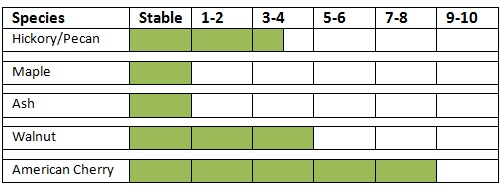Carpet is manufactured by sewing strands of yarn into a backing, creating thousands of yarn loops. What happens to the loops of yarn defines the style of carpet created. When yarn loops are cut, the tufted yarn stands up straight, creating a cut pile carpet. When the loops are uncut, the carpet is called a loop carpet. These two options can be combined to create many carpet style possibilities.
 Level loop carpet
Level loop carpet
As the name suggests, level loop carpets are made up of thousands of yarn loops of similar heights. The level loops create a smooth and durable surface well-suited to high traffic areas.

 Multi-level loops carpet
Multi-level loops carpet
Multi-level loop carpets are created by combining a variety of loop heights. The results are carpets with unique patterns and textures. Multi-level loop and level loop carpets are also commonly referred to as berber carpets.

 Cut and loop carpet
Cut and loop carpet
Cut and loop carpets are combination of cut pile and loop pile that creates a sculpted design that gives visual impact to any room. These carpets can create a variety of patterns from a simple pin dot to larger floral or geometric patterns. The texture helps hide soil and stands up well to active households.

 Frieze carpet
Frieze carpet
Pronounced frih-zay’, this carpet is known by many names including twist and shag. Yarn of frieze carpets is heat twisted very tightly so it curls once it has been cut, giving frieze carpets that bouncy texture they are well-known for.

Plush cut pile carpet
Plush carpets are a type of cut pile carpets with a soft, smooth, and dense cut pile. They have a smooth and flawless appearance that gives a space a traditional and luxurious look.

Textured cut pile carpet
A textured cut pile carpet is the classic residential carpet, suitable for mid to high traffic areas. It differs from its cousin, the plush, by having more visible yarn ends. This results in a slightly more textured looking surface that reduces the crushing and traffic marks commonly found on plush carpets.

Posted on Jul 5 2013 2:52 pm by Kelsey Shipley
|
category: Carpet Flooring Flooring Guides |
2 Comments
All carpet is created from the conversion of fibres. Generally, fibres are spun into yarn and the yarn becomes carpet by being weaved, tufted, or bonded. Each fibre has unique benefits that will influence whether it is suitable for your space.
Nylon
The most popular carpet on the market as it’s present in about 60% of the carpets in the US. This fibre is highly durable and resists wear and tear well. Since nylon fibres are not inherently stain repelling, carpet manufacturers treat the fibres with a stain repelling system such as Shaw’s R2X.
Olefin
This fibre is less resilient than nylon but is still a strong and resistant choice. On the other hand, it’s less likely to fade in colour. Olefin is a great choice for an outdoor carpet as it is mold and mildew resistant plus it’s not very comfortable to walk on with bare feet.
Polyester
This fibre choice is becoming more popular as it is a more cost effective option than other fibres. Polyester is also less resistant than nylon. It shows damage and fades, so it’s not a good choice for high traffic areas. If your polyester carpet has a thick cut pile construction, it can be very soft to the touch.
Acrylic
This carpet option is not a widely used option. It looks and feels like it is wool, but is a less expensive substitute. It’s resistant to mold and mildew.
Wool
Made from all natural fibres, wool is the most expensive carpet option. It’s known for being a durable option that feels great. Both stain and dirt resistant, this carpet does fade in direct sunlight.
Posted on Feb 15 2012 2:02 pm by Kelsey Shipley
|
category: Carpet Flooring Flooring Guides |
2 Comments
 Grout lines can have a huge effect on the way the tile floor installation looks. There are no hard right or wrong answers for what size grout lines should be. However, there are some guidelines for the appropriate size grout joint for technical and aesthetic reasons. For example, when using tiles with imperfect edges larger grout lines should be used.
Grout lines can have a huge effect on the way the tile floor installation looks. There are no hard right or wrong answers for what size grout lines should be. However, there are some guidelines for the appropriate size grout joint for technical and aesthetic reasons. For example, when using tiles with imperfect edges larger grout lines should be used.
Recommended size grout lines
Natural stone: 1/16″ or 1/8″
Rectified (sharp) edge tile: 1/16 or 1/8″
Regular tile: 3/16″, 1/4″, up to 3/8″ or 1/2″
Saltillo or Mexican tile: 3/4″ or 1″
The size of grout line dictates the type of grout your installer (or if you’re DIY’ing it, you) will use. If your grout lines are 1/8″ or wider, use a sanded grout. As the name suggests, this grout has a fine sand added to it that prevent the grout from excessive shrinking while curing. Unsanded grout is only recommended for lines smaller 1/8″ wide.
Posted on Feb 7 2012 12:53 pm by Kelsey Shipley
|
category: Flooring Guides Tile Flooring |
Leave a comment
Much thought and effort is put into choosing a carpet, deciding which fibres and colours are best. Even though you won’t see it after installation, carpet pad (or carpet cushion) is an important part of carpet installation that should not be neglected.
Why is carpet pad important?
- It will make carpet feel feel thicker, softer, and more comfortable underfoot
- Carpet will last longer because carpet pad relieves stress on carpet backing and fibers
- Noise is reduced and carpet feels warmer due to extra thermal insulation
- Installation of carpet pad is often a condition necessary for the manufacturers warranty of new carpets
How do I know what carpet pad is right for me?
The type and thickness of carpet pad needed will vary based on the traffic level and carpet. Areas with light traffic like a bedroom are best suited to thicker and softer carpet pad. Hallways, living rooms, and other heavy traffic areas require a thinner and firmer cushion.
As a general rule, the carpet and rug institute recommends a maximum thickness of 7/16″ for cut pile residential carpet. For a low carpet like Berber or commercial carpets, carpet pad should be 3/8″ or less. Full details about the best carpet padding system for your preferred carpet are best reviewed with a salesperson.
Posted on Feb 2 2012 12:22 pm by Kelsey Shipley
|
category: Carpet Flooring Flooring Guides |
Leave a comment
It’s not only humans that are affected by UV light – your hardwood floors are too. Avoiding the surprise of “bad tan lines” on your wood floors is a process as easy as buying sunscreen. It starts with understanding photosensitivity.
Wood is a natural material, and like fine wines, it ages. Instead of wrinkles, wood shows its age through gradual changes in colour. The amount of colour change a species of wood experiences depends on photosensitivity, also known as the reaction a material has to light.
The chart below shows the average photosensitivity of each species. Each species is rated from stable to 10, with stable species less likely to change colour and “10” species experiencing a more dramatic change in colour.

Always ask your sales representative about the photosensitivity of the specific hardwood you’re interested to get a complete understanding of the effects UV light will have on your floor.
If your dream floor is more photosensitive than you had hoped, don’t worry. Take the following steps to find out if photosensitivity will have an impact on the hardwood floor you’ve envisioned:
- Plan for the colour change by finding out what your floor will look like once its colour has changed. Will it get darker or lighter, and more importantly, do you like that colour? If you do, onto step two.
- Consider how much light the space will get. If the space doesn’t get much UV light, the colour will not change much.
- If the space does get a lot of light, consider investing in blinds or window coverings and closing them during the day to minimize UV light.
- Rearrange furniture, mats, and area rugs occasionally to ensure even colour change.
By understanding the photosensitivity of your hardwood floors you can take the appropriate steps to prevent unexpected colour changes.
Posted on Jan 26 2012 4:47 pm by Kelsey Shipley
|
category: Flooring Guides Hardwood Flooring |
Leave a comment
 Level loop carpet
Level loop carpet
 Multi-level loops carpet
Multi-level loops carpet
 Cut and loop carpet
Cut and loop carpet
 Frieze carpet
Frieze carpet



 Grout lines can have a huge effect on the way the
Grout lines can have a huge effect on the way the 